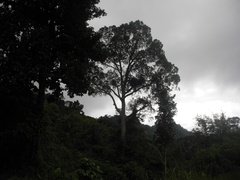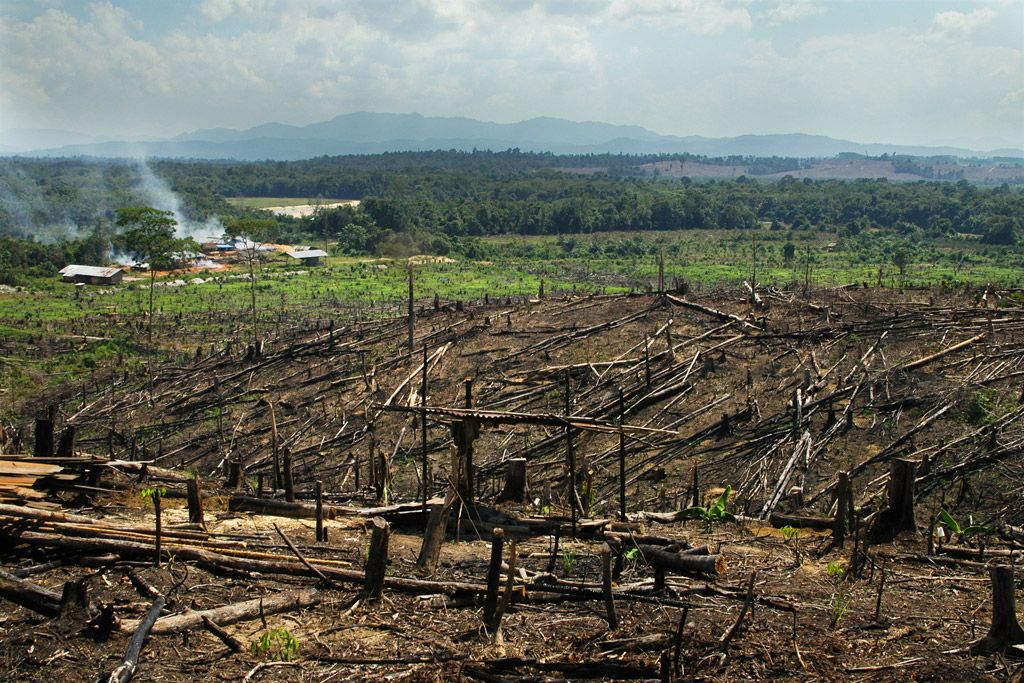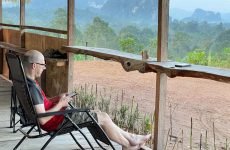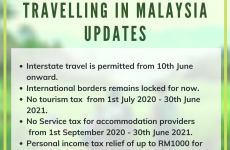Richest Rainforest in the World
Borneo lowland rainforests are the richest rainforests in the world. They are also rival to biodiversity of New Guinea and Amazon. With 267 Dipterocarpaceae species (155 endemic to Borneo), Borneo is the center of the world’s diversity for dipterocarps. These forests are home to the world’s smallest squirrel, the eleven centimeter long pygmy squirrel, and the endangered orangutan.
Endangered Rhinoceros, Elephant and Rafflesia species under Threat
In northeast Borneo, populations of Sumatran rhinoceros and Asia’s largest terrestrial mammal, the Asian elephant, still tenuously survive in the last pockets of forest. These forests contain the parasitic plant Rafflesia arnoldii, which produces the world’s largest flower (up to one meter in diameter). These forests are globally outstanding for both bird and plant richness, with more than 380 birds and an estimated 10,000 plant species found within its boundaries. Unfortunately, these forests have been rapidly converted to oil palm plantations or commercially logged at unprecedented rates over the past ten years.
In 1997-1998 fires intentionally set to clear the forest for commercial agriculture such as oil palm ravaged Kalimantan. If the current trend of habitat destruction continues, there will be virtually no remaining lowland forests in Borneo by the period 2012 to 2015. However, there is an incipient conservation movement to preserve some Malaysian lowland rainforests. This is particularly evident in the Kinabatangan River basin.
Location & General Description
This ecoregion is made up of the lowland forests of Borneo. All of Borneo, Java, Sumatra, and mainland Malaysia and Indochina were once part of the same landmass during the Pleistocene glacial period. Today Borneo is separate but shares similarities in flora and fauna with these other landmasses. The geology of the Borneo lowland rainforests consists of limestones, volcanic rocks, schist-gneiss complexes, and sedimentary rocks. Soils are primarily generally older and infertile soils. Based on the Köppen Climate Classification System, this ecoregion falls in the tropical wet climate zone. Monthly rainfall exceeds 200 millimeters year-around, and the temperature rarely fluctuates more than 10°C.

Over 10, 000 Species of Flora
The flora of Borneo alone consists of about 10,000-15,000 species. This is more than on any other island or region in Malaysia and richer than all of Africa, which is forty times larger. Borneo has more than 3,000 tree species and 2,000 orchid species. It is also the center of distribution of dipterocarps, with 267 species, 60 percent of them endemic.
Rafflesia in Borneo
Some of the most unique plants in the world are the five or six species of the parasitic Rafflesia plant found in Borneo. All Rafflesia produce large brown, red, orange, and white flowers. The largest in the world, Rafflesia arnoldii, is found in this ecoregion and produces flowers more than 3 feet wide. Rafflesia have no leaves, instead deriving all their energy from the tissues of the ground vine Tetrastigma, which it parasitic. Large buds emerge from the vine and have five petals that surround spikes that smell like rotting meat. This smell attracts insects, which act as pollinators.
Borneo Rainforest with its small-medium carnivores
Borneo also lacks some of the larger predators found in Asian mainland ecoregions, such as the tiger (Pantera tigris) and the leopard (P. pardus). In their absence, several small-medium carnivores dominate these forests, including the endangered clouded leopard (Neofelis nebulosa), sun bear (Helarctos malayanus), Sunda otter-civet (Cynogale bennettii), and other mustelids. The Asian elephant (Elephas maximus) and critically endangered Sumatran rhinoceros (Dicerorhinus sumatrensis) are found in northeastern Borneo. The Asian elephant and Sumatran rhinoceros are the largest forest herbivores. They need a large amount of forest to survive. The intense human pressure on the natural forests will challenge their ability to survive in the long term.
Home of 13 primate species
Borneo’s lowland forests are home to the globally recognized orangutan. The prehistoric race of orangutan distribution reached mainland Asia through Indo-china and Thailand to southeastern China. Today the orangutan is limited to northern Sumatra and Borneo. Unlike other apes, orangutans are solitary and arboreal. They feed primarily on fruit but also feed on leaves, flowers, insects. During times of food stress, they will eat bark too. The orangutan is not the only primate in Borneo’s lowland forests. They are home to thirteen primate species: three apes (the orangutan and two gibbon species), five langurs, two macaques, the tarsier (Tarsius bancanus), the slow loris (Nycticebus coucang), and the endangered proboscis monkey (Nasalis larvatus).
Heaven of Birds
The bird fauna, like the mammal fauna, is similar to that of peninsular Malaysia and Sumatra. In Borneo there are eight hornbill species, eighteen woodpecker species, and thirteen pitta species.
Hornbills such as the bushy-crested (Anorrhinus galeritus), helmeted hornbill (Rhinoplax vigil), and great rhinoceros (Buceros rhinoceros) are important seed disperses of many fig (Ficus spp.) trees. Figs act as a keystone resource, providing food for many animals such as monkeys, arboreal mammals, squirrels, civets, and birds. The high diversity of fig trees in the rainforest assures food during fruiting throughout the year.
Current status & Threats over Borneo Rainforest
This ecoregion is the second largest ecoregion in the Indo-Pacific region. Yet more than half of the natural habitat in this ecoregion has been cleared or degraded. In recent years there has been extensive habitat loss, and current assessments predict further widespread destruction of forests.
This area has been heavily logged, with most logging occurring in the last thirty years. Commercial logging destroyed the forests while providing access to them. Massive agricultural projects, such as oil palm, rubber, and industrial timber for pulp and plywood, soon followed. Smaller agricultural shareholders also filled in these areas by cutting and burning patches of forests .By the late 1980s Indonesia was the world’s largest plywood producer. Private and state-owned forestry companies have stripped the land clear for pulp and palm oil plantations, destroying vast tracts of forest. They are replanting with a limited number of fast-growing exotic species.
Records of Destruction over the Years
In 1982-1983 27,000 km2 of tropical rainforest was burned in Kalimantan. The cause of what was at the time the largest forest fire ever recorded was widespread logging activities over the previous decade. Logging had transformed the fire-resistant primary forest into a degraded and fire-prone landscape. The El Niño-driven drought of that year set that stage for catastrophe when small agricultural fires escaped and ignited the forest. In 1997-1998, another intense El Niño year, the same events unfolded. In 1997-1998 fires raged across Kalimantan and Sumatra as forests were being cleared to make way for agriculture and plantation lands. More than 23,750 km2 of lowland rainforest in Kalimantan was burned in these years alone.

Efforts has to be Taken Before Too Late
The prognosis for Borneo’s lowland forests is bleak. With little to no law enforcement in Indonesia, large tracts of land will be susceptible to burning every year by commercial logging for agricultural projects such as oil palm, rubber, and industrial timber for pulp and plywood. Smaller agricultural shareholders threaten the forests through continued slash-and-burn agricultural practices. Little to no regard is given to the long-term environmental effects these actions will cause. Without immediate intervention to stem the loss of these forests, and given the current rate of destruction, there will be no primary lowland dipterocarp forests remaining in Indonesian Borneo within ten years.
Article adapted from: Borneo lowland rainforests
Original author: World Wildlife Fund



